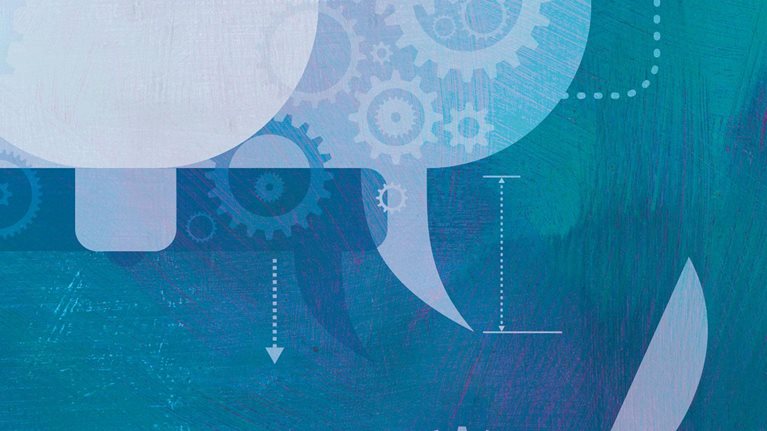Across industries, the great cleanup is underway. Driven by tightening regulations, pressure from investors, and shifting customer preferences, companies are striving to reduce the burden of their activities on the planet. This quest for sustainability requires action on many fronts, with changes to supply networks, manufacturing processes, and business models. Companies are also rethinking how their products are designed, engineered, and used, looking for ways to meet performance and quality requirements while using fewer resources across the full life cycle of everything they make.
Two factors are pushing design up the sustainability agenda. The first is technological: an ongoing shift of lifetime emissions from product operation to product production. The shift is partly thanks to user demand for extra features and capabilities that require additional materials to deliver. But it’s also because technical changes designed to promote efficient operation tend to involve additional product complexity. For example, domestic heat pumps require more materials than the gas or oil boilers they replace. Compared with their energy-hungry predecessors, high-efficiency electric motors may contain additional carbon-intensive materials, including extra copper and rare-earth magnets. The variable-frequency drives that are used to optimize the control of these advanced motors need their own circuitry and semiconductor components.
Perhaps the highest-profile example of this shift is the transition from internal combustion engines to electric propulsion, which is reshaping the life-cycle emissions profile of passenger vehicles. One study found that about 20 percent of the carbon generated by a diesel vehicle comes from its production, with most of the remaining 80 percent emitted at the tailpipe. An equivalent electric car, by contrast, produced fewer emissions in the use phase but required additional carbon-intensive materials in the battery. If electricity for the vehicle came from fossil fuels, production’s share of lifetime emissions would rise to 45 percent. If the vehicle were charged using only renewable energy, production emissions would account for 85 percent of the total (Exhibit 1).

The second reason for increased scrutiny on design sustainability is the recognition that the design phase is typically the most powerful and cost-effective point to address the resource footprint of future products and services. Companies have long known that design decisions determine most of a product’s manufacturing, operating, and maintenance costs. The same logic applies to sustainability. Our analysis suggests that while R&D accounts for 5 percent or less of the total cost of a product, it influences up to 80 percent of that product’s resource footprint.
Design affects product sustainability in multiple ways. Products with greenfield design for sustainability may use less material or replace high-footprint virgin materials with lower-impact recycled or biologically based alternatives. Swiss sports-shoe company On, for example, has developed a fully recyclable shoe made from bio-based synthetic materials. Instead of simply selling the product, the company offers a subscription model for consumers. Worn-out shoes will be sent back to the manufacturer for disassembly, with the consumer receiving a new pair in return.
Design decisions can also determine how easily a product can be repaired, upgraded, remanufactured, or recycled at end of life. Consumer-electronics company Fairphone uses a modular design for its devices, with the aim of eliminating planned obsolescence by allowing components to be replaced by the user if they fail or become outdated.
Building a sustainable R&D function
Leading organizations are already achieving impressive results by focusing the effort and ingenuity of their R&D teams on the product-sustainability imperative. For many R&D functions, however, a key challenge is finding ways to meet new demands for enhanced sustainability alongside the ongoing need to control costs, meet new customer needs, and differentiate their products from those of their competitors.
Executives tell us that the ability to manage this additional complexity represents the next frontier in the development of high-maturity R&D organizations. Of course, some companies have already made step-changes in their capabilities in recent years. For example, traditional design-to-cost methodologies have evolved into today’s design-to-value (DtV) approach, with its focus on the cost-efficient delivery of the features that matter most to customers. And more and more businesses have also made great strides in digitization, using new tools and data sources to accelerate the product-development process and improve its outcomes.
Design for Sustainability (DfS) extends and expands these approaches, requiring organizations to adapt their existing tools, adopt new ones, and upgrade both the infrastructure and capabilities of the R&D function (Exhibit 2).

To achieve DfS at scale, companies can address three interrelated elements in the R&D function. First, how will they rethink the way their products use resources, adapting them to changing regulations, adopting circularity principles, and making use of customer insights? Second, how will they understand and track the emissions and cost impact of design decisions to achieve their sustainability ambitions? Third, how will they foster the right mindsets and capabilities to integrate sustainability into every product and every design decision? Let’s look at each of these elements in more detail.
Customer and design insights
The biggest opportunities to improve product sustainability often come from changes in the wider value chain that surrounds a product. Leading companies take a holistic perspective on sustainability, examining the way products are transported, packaged, handled, and used—and what happens to them at end of life. They talk to and observe customers, suppliers, and other stakeholders in the value chain, then they use the resulting insights to generate creative improvement ideas.
One quick-service-restaurant company, for example, wanted to reduce the amount of packaging waste generated by its stores. When the design team looked at the complete value chain, it found that a significant fraction of that waste was generated by the intermediate packaging that protected products in transit from factory to store.
That inspired a complete redesign of the packaging value chain. The company developed an aesthetically pleasing, resource-efficient, and recyclable package that could protect products all the way from production to the customer’s hands. Individual products were then consolidated in lightweight, reusable, and returnable containers to protect them in transit. Those changes helped the company reduce total packaging waste by 18 percent, with less of that waste going to landfills. The company also cut overall supply-chain greenhouse-gas emissions by a third.
Emissions cost transparency
Sustainable design is fraught with complexity and trade-offs. Substituting recycled material for virgin material might at first appear to reduce the carbon footprint of a product—but transportation emissions might outweigh any gains if recycling plants are concentrated in far-off locations. To make decisions such as these, design teams need good data on the environmental footprint, costs, and risks associated with different materials and manufacturing options. And they need effective tools that allow them to analyze different options quickly and accurately.
Such tools are now becoming available. Resource cleansheets, for example, extend the cleansheet cost-modeling methods that mature organizations already use to support the design and procurement process (Exhibit 3). By including greenhouse-gas emissions into their bottom-up models of products and processes, companies can compare different design, manufacturing, and supply-chain options. Or they can benchmark their current approaches against the best available to identify the biggest improvement opportunities.

Because resource cleansheets also include cost data for materials and manufacturing steps, companies can use them to find win–win opportunities that simultaneously reduce costs and associated emissions—or at least to compare the relative value of options that improve the product’s environmental footprint but cost more.
Combining rigorous, granular analysis with creative thinking can unlock solutions that deliver the combination of better environmental performance, lower costs, and greater customer value. One major footwear company, for example, used this approach to redesign the packaging for its entire product range. Optimizing the box design, switching to recycled cardboard, and reducing the print area and number of colors helped it cut the carbon footprint of the boxes by almost half. Those changes also delivered a cost reduction of almost 20 percent. Choosing to reinvest some of those savings into a switch from oil-based printing inks to a bio-based alternative would generate a further 9 percent carbon-footprint reduction (Exhibit 4).

The work also revealed that the organization’s policies had a real impact on packaging-related emissions. The special tooling used to manufacture some packaging types was responsible for a significant fraction of their carbon footprint, and frequent changes to packaging design meant that these tools were often discarded long before the end of their useful life. Simply retaining the same designs for longer generated a big cut in both costs and carbon emissions.
Capabilities and execution
The third piece of the puzzle involves developing organizational structures, resources, and capabilities to support DfS efforts across the whole R&D function (Exhibit 5). One common concern expressed by R&D leaders is that they struggle to execute the potential sustainability improvements that they identify. Engineers typically lack the tools to assess and prioritize different ideas or the knowledge to incorporate them into a product.

To overcome these stumbling blocks, many companies find it useful to establish a focal point for their efforts—either a center of excellence that supports the sustainability program across the function or dedicated sustainability champions working within business units. The center of excellence takes responsibility for the introduction of new tools, such as resource cleansheets, and for acquiring and maintaining the data needed to support effective decision making on sustainability topics. It will also work with leaders in the wider R&D function to build sustainability into the organization’s formal R&D processes.
To help R&D staff use the new tools and processes effectively, companies will likely need to invest in capability building, from introductions to sustainability topics for senior managers to in-depth training on life-cycle analysis and resource cleansheeting for design and engineering personnel.
Finally, organizations need to track the progress of the sustainability efforts and embed them into their R&D performance-management systems. That calls for changes to metrics, targets, and incentive systems, all aligned with the sustainability goals of the wider business.
The transition to a sustainable economy requires products that are designed differently, made differently, and used differently. The teams designing those products will need to be set up differently too. Leading organizations are already beginning that transformation, raising the maturity level of their R&D functions with new skills, processes, tools, and mindsets.

